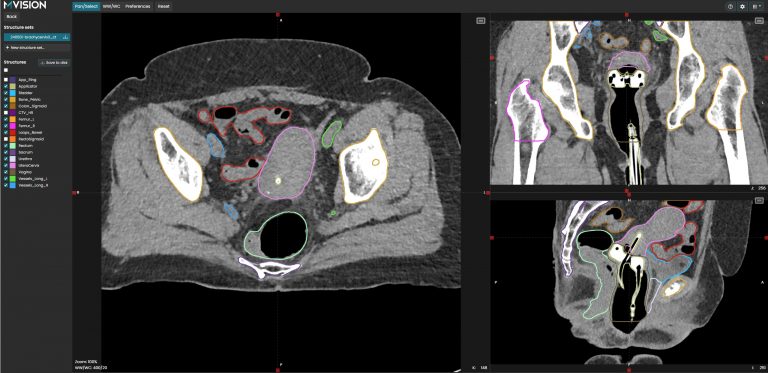One of the important studies presented at the recent ASTRO 2023 meeting provided strong evidence for the safety and efficacy of concomitant boost during hypofractionated radiotherapy for breast cancer.
Currently, about 60% of women with breast cancer receive conservative surgery, followed by radiotherapy (1). Previous studies showed that for conservative therapy, using 15 fractions for the whole breast instead of 25, provides the same results in terms of local control, relapse free survival, overall survival and toxicity (2). However, for patients with a higher risk of recurrence, a supplementary dose is needed to the region from where the tumor was excised. The classical approach is to provide this boost sequentially, after the whole breast was irradiated. However, this means that the treatment takes several days longer, which has logistical disadvantages for both patients and healthcare providers.
Shorter treatment schedules aim to increase convenience while preserving the efficacy, but solid evidence is needed before changes to clinical practice can be considered.
The research presented at ASTRO has this practice-changing potential. The study involved nearly 2300 participants and a median follow-up time of 7.3 years. The five-year and seven-year recurrence rates were 1.9% and 2.6% following hypofractionated/concurrent boost treatment, as compared to 2.0% and 2.2% following conventional/sequential boost treatment. Cosmetic outcomes at three years post-treatment were rated by physicians as excellent or good for 84% of patients in the hypofractionated/concurrent boost arm, compared to 86% in the conventional/sequential boost arm. Severe (grade 3 or higher) side effects were uncommon for both groups, experienced by 3.5% of patients after shortened treatment and 3.3% after conventional treatment (3).
“This approach cuts treatment time for these patients in half,” said the leading investigator, Professor Frank A Vicini from MHP Radiation Oncology Institute. Quality assurance is paramount in radiotherapy trials, and higher doses need a higher degree of accuracy in contouring, treatment planning and delivery. “Adding a concurrent radiation boost to whole breast treatment requires a high degree of sophistication, and we wanted to ensure that sites were able to deliver the concentrated doses accurately.
MVision AI is supporting clinicians in delivering precision radiotherapy such as comprehensive breast treatment, by providing auto-contouring solutions which increase consistency and save precious time. Our Contour+ solution offers a breast CT model comprising over 55 regions of interest, based on the ESTRO, RTOG, and RADCOMP guidelines (4-6). In addition to standardized structures, ready-made combinations of the target volumes and heart chambers are also included (7).
References
- Nelson JA, Rubenstein RN, Haglich K, et al. Analysis of a Trend Reversal in US Lumpectomy Rates From 2005 Through 2017 Using 3 Nationwide Data Sets. JAMA Surg. 2022;157(8):702–711. doi:10.1001/jamasurg.2022.2065
- Gu L, Dai W, Fu R, et al. Comparing Hypofractionated With Conventional Fractionated Radiotherapy After Breast-Conserving Surgery for Early Breast Cancer: A Meta-Analysis of Randomized Controlled Trials. Front Oncol. 2021;11:753209. Published 2021 Oct 1. doi:10.3389/fonc.2021.753209
- F.A. Vicini, et al. NRG RTOG 1005: A Phase III Trial of Hypo Fractionated Whole Breast Irradiation with Concurrent Boost vs. Conventional Whole Breast Irradiation Plus Sequential Boost Following Lumpectomy for High Risk Early-Stage Breast Cancer, IJROBP, 2022;114(3),doi:10.1016/j.ijrobp.2022.07.2320.
- Offersen BV, Boersma LJ, Kirkove C, et al. ESTRO consensus guideline on target volume delineation for elective radiation therapy of early stage breast cancer. Radiother Oncol. 2015;114(1):3-10. doi:10.1016/j.radonc.2014.11.030
- Kong FM, Ritter T, Quint DJ, et al. Consideration of dose limits for organs at risk of thoracic radiotherapy: atlas for lung, proximal bronchial tree, esophagus, spinal cord, ribs, and brachial plexus. Int J Radiat Oncol Biol Phys. 2011;81(5):1442-1457. doi:10.1016/j.ijrobp.2010.07.1977
- Breast Contouring Radcomp Consortium, v3, February 2016, Accessed on 19 October 2023, https://www.nrgoncology.org/Portals/0/Scientific%20Program/CIRO/Atlases/RADCOMP/RADCOMP%20Breast%20Atlas%20v.3%20-%20bigreduced.pdf?ver=2020-08-01-140849-360
- Milo MLH, Offersen BV, Bechmann T, et al. Delineation of whole heart and substructures in thoracic radiation therapy: National guidelines and contouring atlas by the Danish Multidisciplinary Cancer Groups. Radiother Oncol. 2020;150:121-127. doi:10.1016/j.radonc.2020.06.015



